Blog
I’m ditching my PC thanks to this MacBook USB docking station — here’s why it’s great

Since I review and test the best MacBooks and the best computers for a living, I frequently swap between machines that run on macOS or Windows 11. I not only do that in our office, but also at home, where I use a MacBook Air 13-inch M4 to browse the web, watch videos, or for other personal use.
While I can’t help but switch between Windows machines and Macs at work, I’ve wanted to use just one machine at home. Right now, I use my Windows PC when I’m not at the office, for recording my podcast, or playing the best PC games. While I can’t easily play games on Mac, I can use a MacBook Air for everything else.
To that end, I’ve decided to make a MacBook Air my primary computer to streamline things at home. However, I have a lot of peripherals connected to my PC, such as a webcam, microphone, speakers, and two monitors. To use these devices, I’ve plugged everything into Plugable’s 14-in-1 USB-C docking station. Let me tell you, this device has been an absolute game-changer. Not only has it simplified things at home, but it could potentially lower my electricity bill!
Docking station features
As the name suggests, this Plugable USB-C docking station has a total of 14 ports. That’s the perfect number of ports for all the devices I use. The only ports I’m not currently using are the two HDMI ports, and that’s only because I’m using the pair of DisplayPorts for connecting my monitors. A dock with fewer ports would’ve been too restrictive though.
Let’s get into port selection. The front of the docking station has four USB-A ports, one of which has power delivery. The USB-C port also has power delivery and is the port I use when I want to charge my phone or other devices. There’s also a 3.5mm headphone jack (for my speakers) and a microSD/SD card slot reader. I don’t typically use the latter, but it’s good to have in case I need it.

On the back, we have a pair of HDMI ports and two DisplayPorts. The docking station supports up to 4K 60fps for two HDMI or DisplayPort monitors, or a mix of both. There’s also a 1Gbps Ethernet port, which is another selling point for me when I need to download big files faster than I could over Wi-Fi. Lastly, there’s a USB-C port on the side with 100W power delivery where you connect your laptop.
At 8.9 x 3.3 x 1.0 inches and just over a pound, this docking station is relatively small and light. Thanks to its small footprint, it’s easy for me to place it where I need it on my desk. The power brick is heavier and thicker than the docking station though, and its power cables are approximately three to four feet long. My work environment is relatively small, so I didn’t have any problems finding a power socket for the docking station or managing cables, but your results may differ.
Something important to keep in mind is that you’ll need to download Plugable’s DisplayLink app for your MacBook. As detailed on this device’s product page, some Macs only support a single extended monitor. However, this USB-C dock uses DisplayLink technology to circumvent display limitations. This means you can have a dual monitor setup even if you have an older M-series MacBook Air or MacBook Pro that doesn’t support dual display output.
How I use the docking station
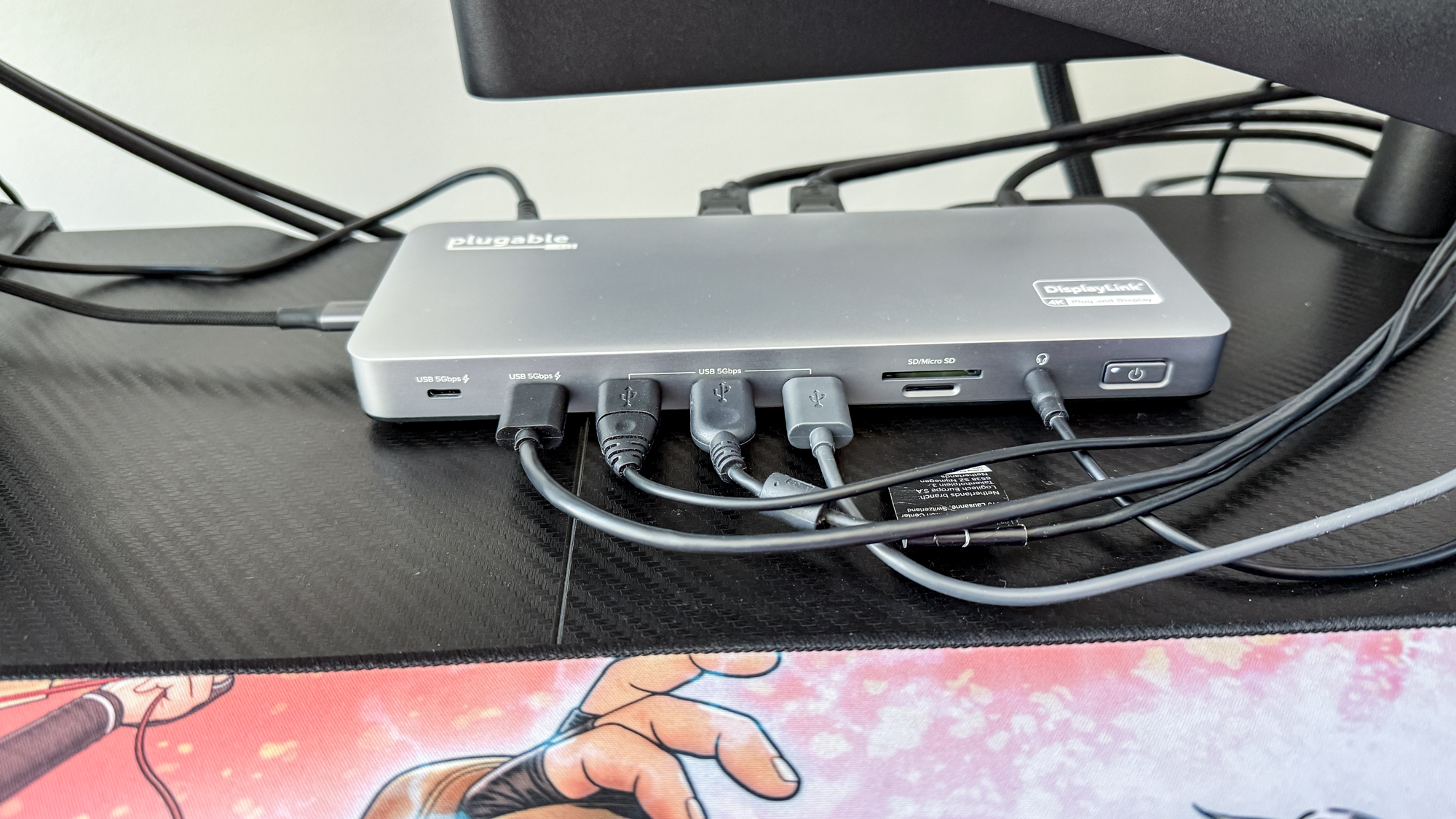
You can check out my article about how I achieved the perfect desk setup to get a full rundown of all the devices I had connected to my gaming PC. For this story though, I’ll provide a brief explainer about said devices and how I use them.
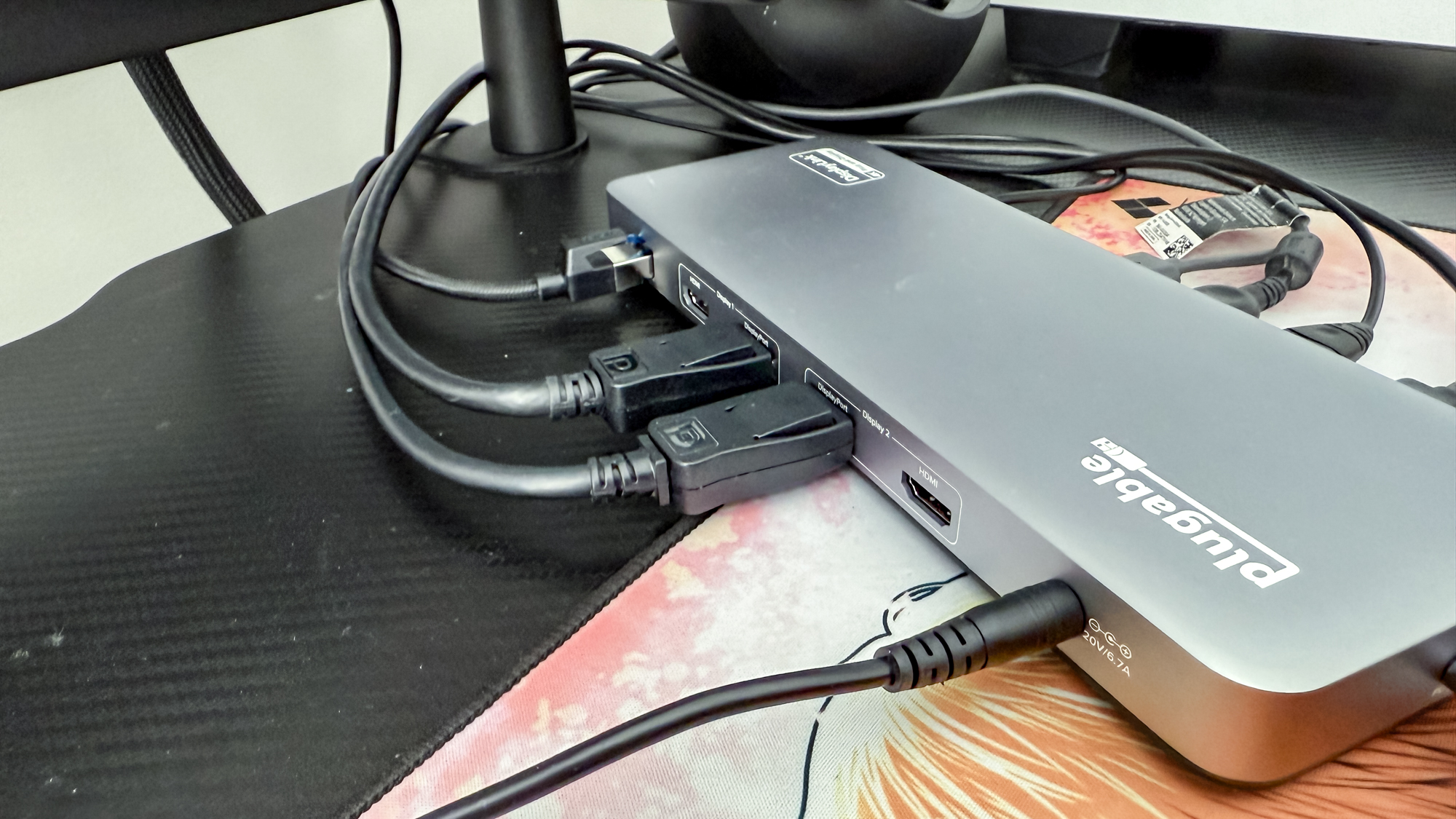
First up, I have a pair of Asus VG248QG gaming monitors. Featuring a 1080p resolution, 165Hz refresh rate and 0.5ms response time, these 24-inch monitors are great for work and gaming. I have both monitors hooked up to the Huanuo Dual Monitor mount. I keep the MacBook Air M4 directly under the left-side monitor since that’s a nice spot for it.
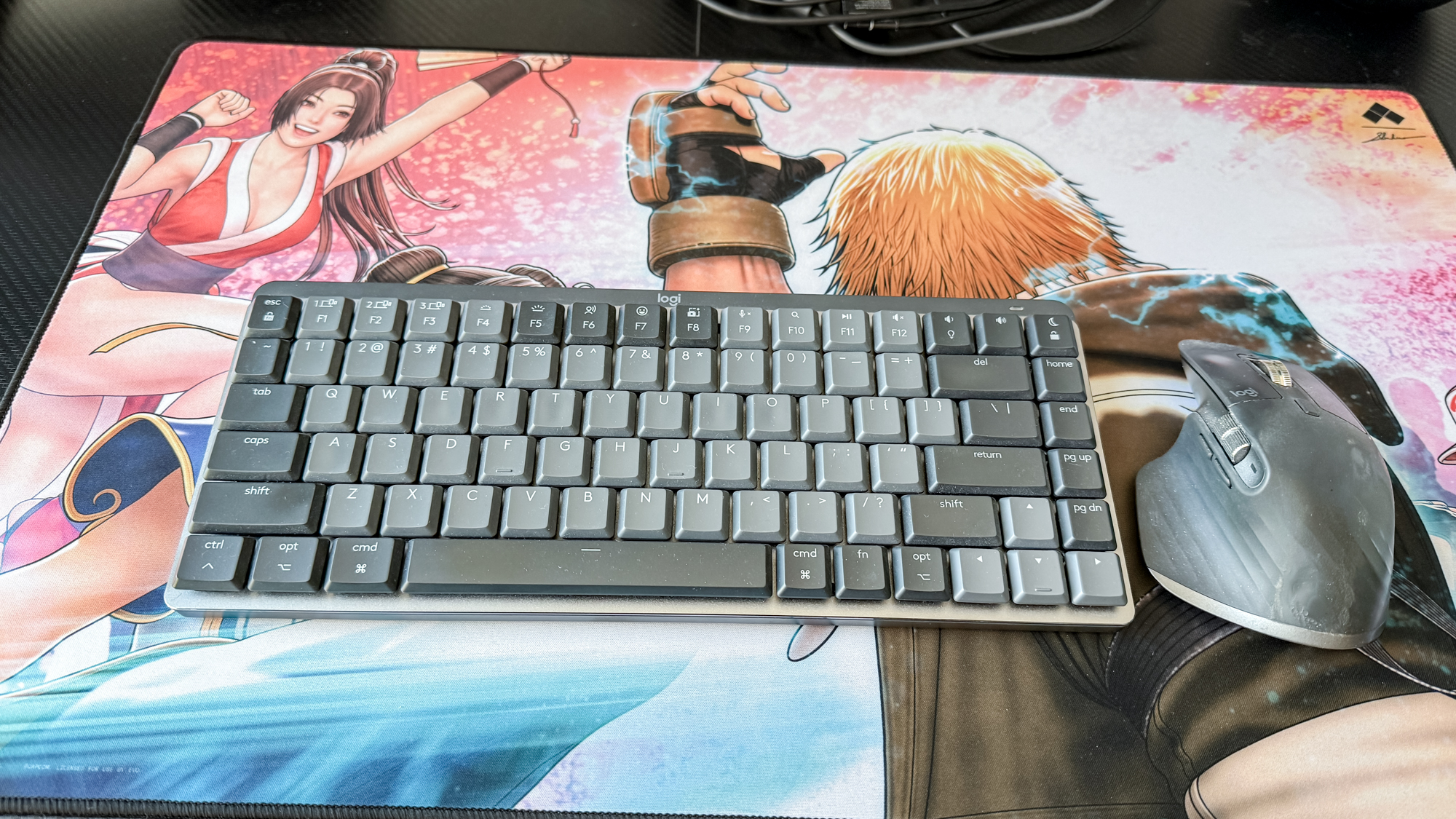
Next, I have the Logitech MX Mechanical Mini keyboard and Logitech MX Master 3S mouse, which are two of the 3 MacBook accessories I can’t live without.I use Bluetooth to connect these peripherals to the MacBook Air, and both work as seamlessly as they would when plugged in. Though I could use the MacBook Air’s built-in keyboard and touchpad, I’m more productive when using the best wireless mouse and best wireless keyboard.
Lastly, I have the Creative Pebble V2 speakers, Logitech C920 webcam, Logitech Litra Glow streaming light, and the Elgato Wave 3 microphone and its associated pop filter and mic arm at my setup. I use the aforementioned USB-A ports in the front to connect all of these. I used the Razer Barracuda Pro with my PC, but I’ve switched to the Corsair Virtuoso Max headset, which I connect to the laptop via Bluetooth.
Save for operating system differences, with everything above connected, I can use the MacBook Air exactly like I would my PC for almost all I need. However, there is one main thing I’ve had to effectively sacrifice — PC gaming.
PC gaming?
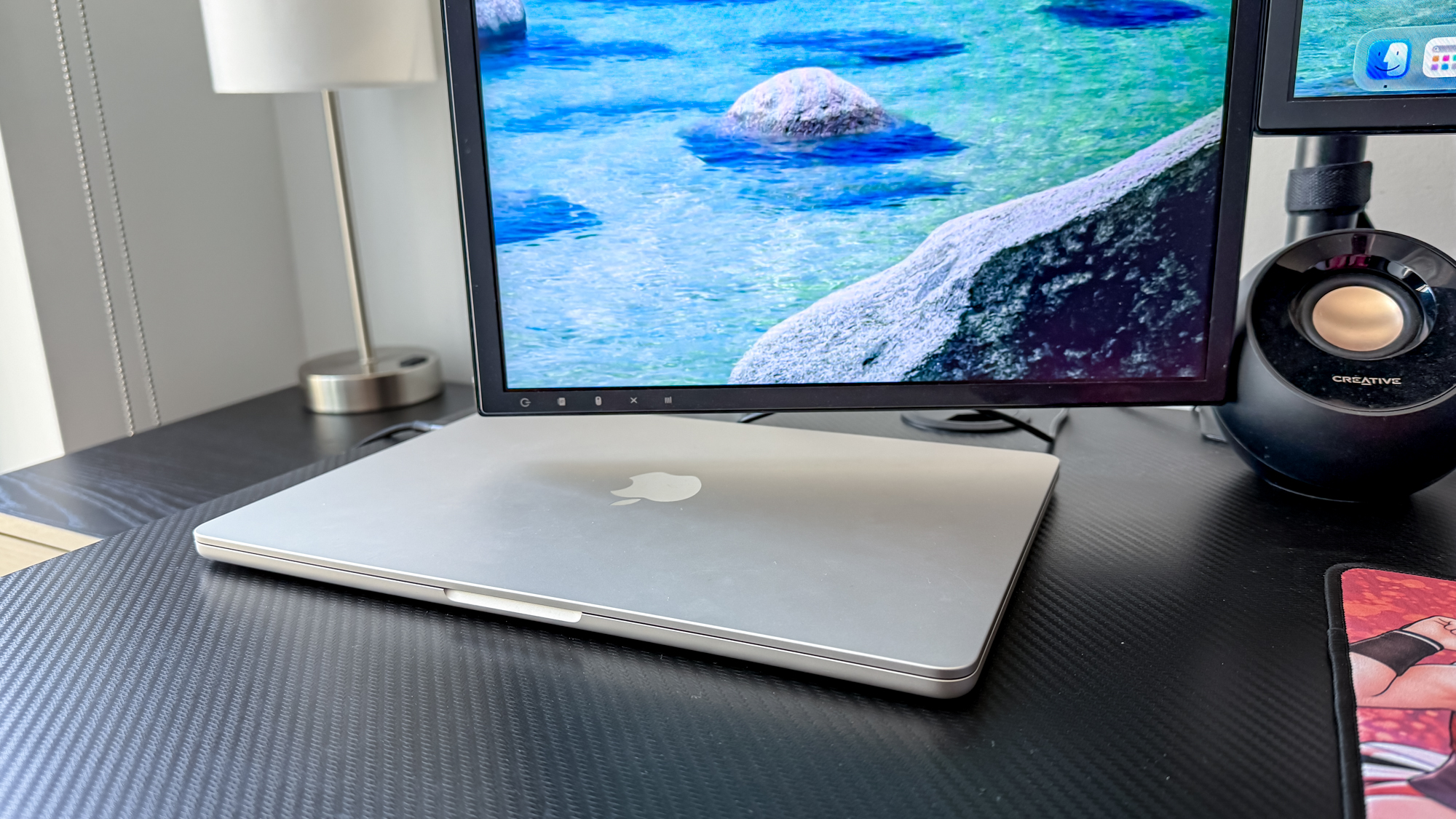
Gaming on Macs has gotten a lot better ever since Apple introduced its M-series chips. But while it’s great that Macs can now run games like Cyberpunk 2077, Resident Evil 4 and Baldur’s Gate 3, you don’t have access to the wide scope of games available on Windows PCs. This has been the main reason why I haven’t become a full-time Mac user. However, I’m now more willing to all but abandon Windows when I’m at home.
I had my gaming rig built about three years ago, but it’s still plenty powerful for a lot of modern gaming thanks to its Nvidia RTX 3080 Ti GPU, 11th Gen Intel Core i7 CPU and 32GB of RAM. That said, these days I might use it once or twice a year to play video games. That’s because I mainly play on the PS5 Pro since I can just turn on the console and start gaming instead of going through the whole process of getting a PC game to run on my TV, as I detail in my article about why I prefer playing games on my LG OLED TV.
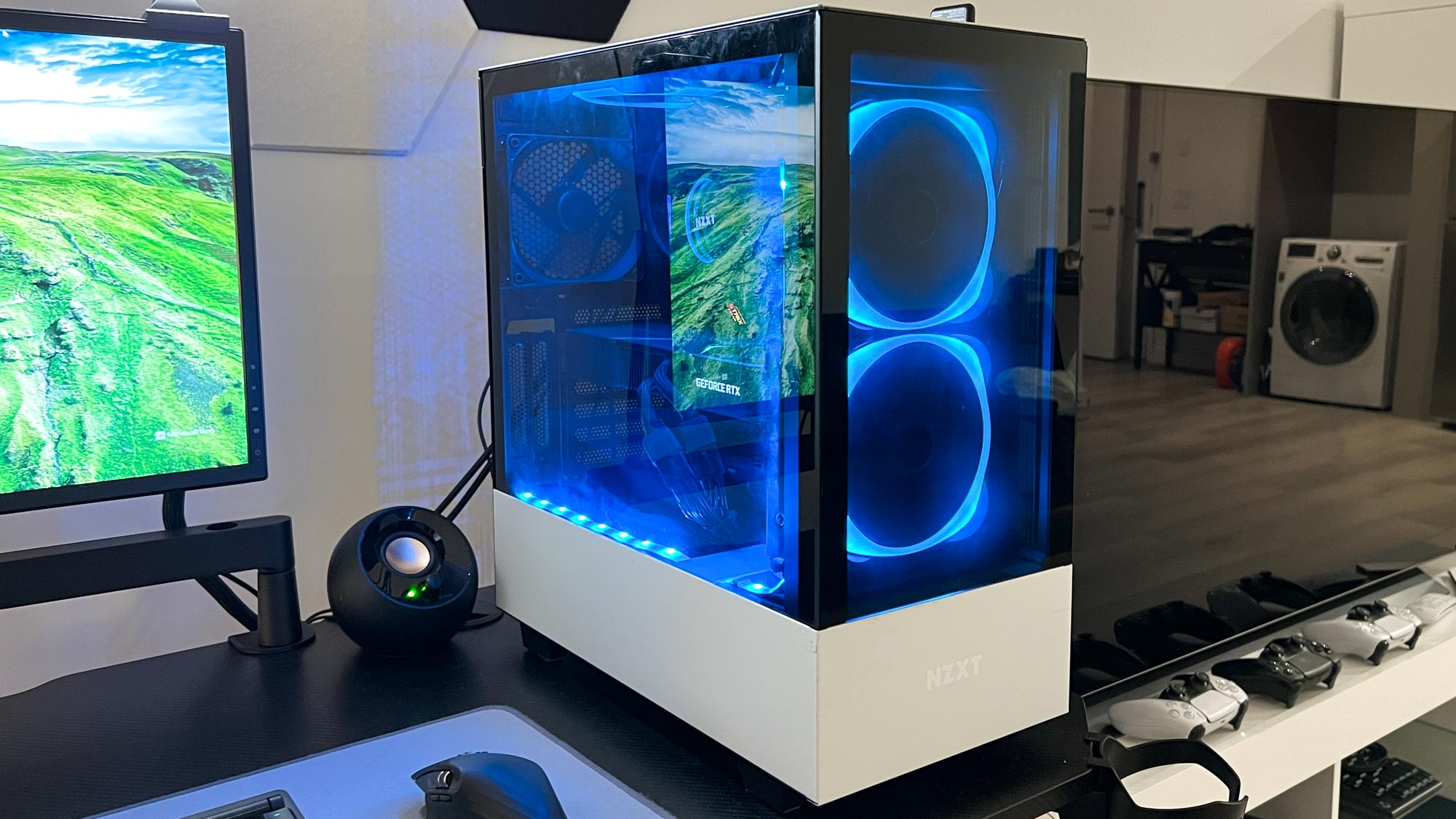
The other reason I’ve limited my PC gaming time is that I don’t want to raise my electricity bill. For instance, when I played Indiana Jones and the Great Circle on PC, my electricity bill went up by around $20. And earlier this year, when I just used my PC to stream Monster Hunter Wilds from my PS5 during weekend nights, my bill went up by a shocking $60! My PC is a power-hungry beast!
So, while I can’t play the majority of the PC games I own on a Mac, I don’t do enough PC gaming to justify using my PC for other things besides gaming. If there’s a big game I want to play, then I can re-setup my PC. Otherwise, I can scratch any random PC gaming itch by playing on the SteamOS version of the Lenovo Legion Go S.
A game-changing device
I’ve used Windows PCs for the majority of my life, but I’m okay with using a Mac as my main at-home (and travel) computer. I’ve tried several docking stations before, but none give me the versatility of this 14-in-1 Plugable docking station. Though it’s pricey even at its current discounted price of $169, it’s been a game-changer for me. I would easily recommend it to anyone who wants to use their MacBook or Mac mini M4 as their main computer.
Except for PC gaming, which I don’t do a lot of these days anyway, I can perform most anything on a Mac that I can on a PC. And if using a Mac at home instead of my beefy gaming rig can significantly lower my electricity bill, then that’s more than the cherry on top.
Follow Tom’s Guide on Google News to get our up-to-date news, how-tos, and reviews in your feeds. Make sure to click the Follow button.











